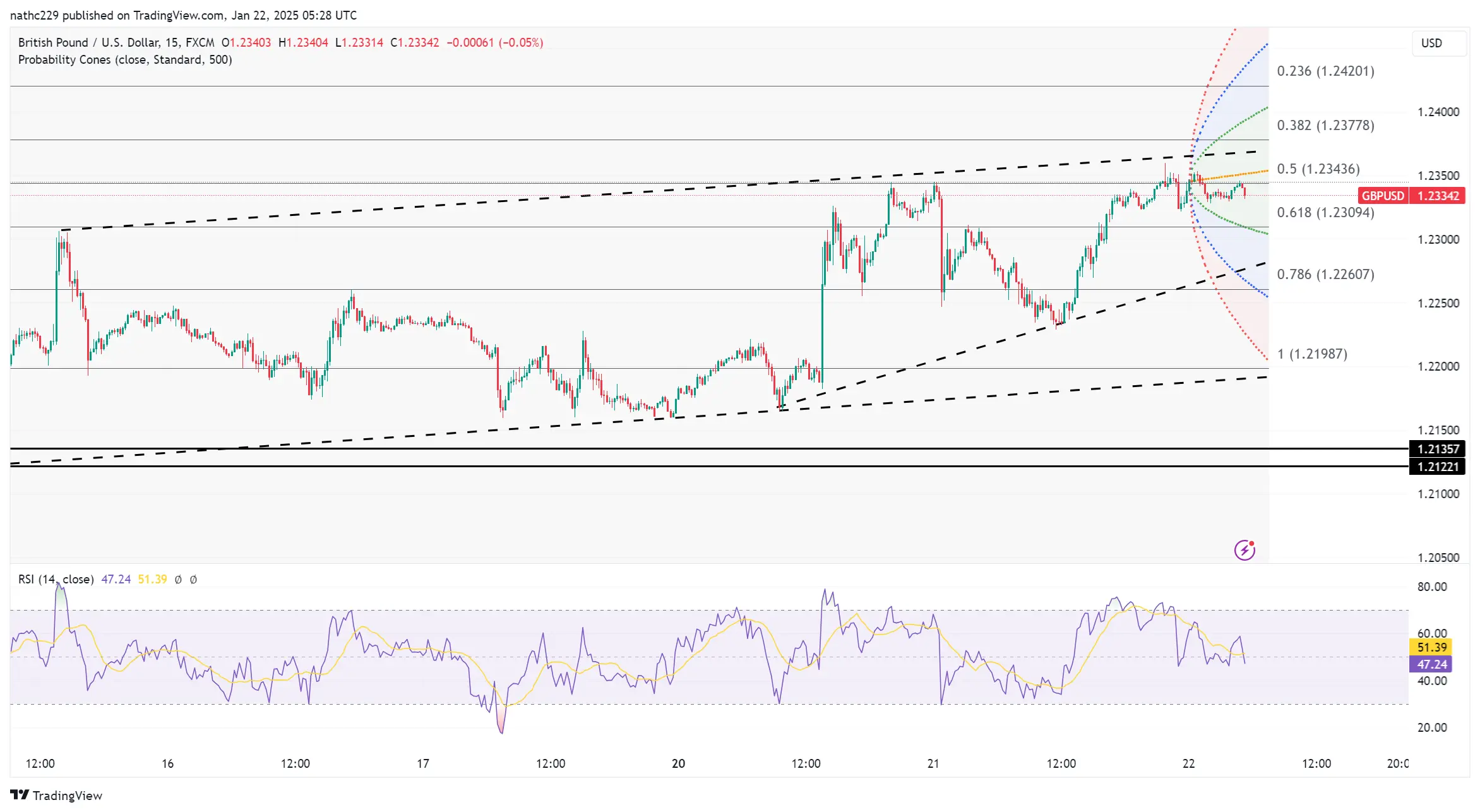Sterling Tests Two-Week High as Market Eyes Fiscal and Tariff Developments

GBP/USD hovered near a two-week high of 1.2345 on Tuesday, supported by easing UK fiscal concerns and speculation over Trump tariff policies. Gilt yields fell 5-7 basis points across the curve, signaling a slight easing of the funding crisis that previously weighed on sterling. However, fiscal uncertainties surrounding Prime Minister Keir Starmer’s management of the UK budget and current account deficit remain a headwind. Persistently high inflation, sluggish economic growth, and expectations for a BoE rate cut in February further constrain sterling’s upside potential.
From a technical perspective, GBP/USD shows signs of consolidation. Resistance lies at 1.2345, the recent high, with additional levels at 1.2390 (21-day moving average) and 1.2455 (50% Fibonacci retracement of the 1.2811-1.21 decline). On the downside, support is at 1.2260 (10-day moving average), followed by 1.2230 (Tuesday’s low) and 1.2160 (Monday’s low). A break above 1.2345 would reinforce bullish sentiment, targeting higher resistance levels, while a dip below 1.2230 could open the door for further declines toward the 1.21 trend low.
The near-term outlook hinges on tariff developments and rate expectations. Uncertainty around Trump’s tariff policies continues to inject volatility into GBP/USD, while the BoE’s dovish rate outlook contrasts with a relatively hawkish Fed stance for 2025. Sterling’s ability to hold above key support levels will depend on whether fiscal concerns remain subdued and U.S. policy developments provide any relief. For now, GBP/USD is likely to trade within its current range, with tariff headlines and macroeconomic data acting as key drivers.

